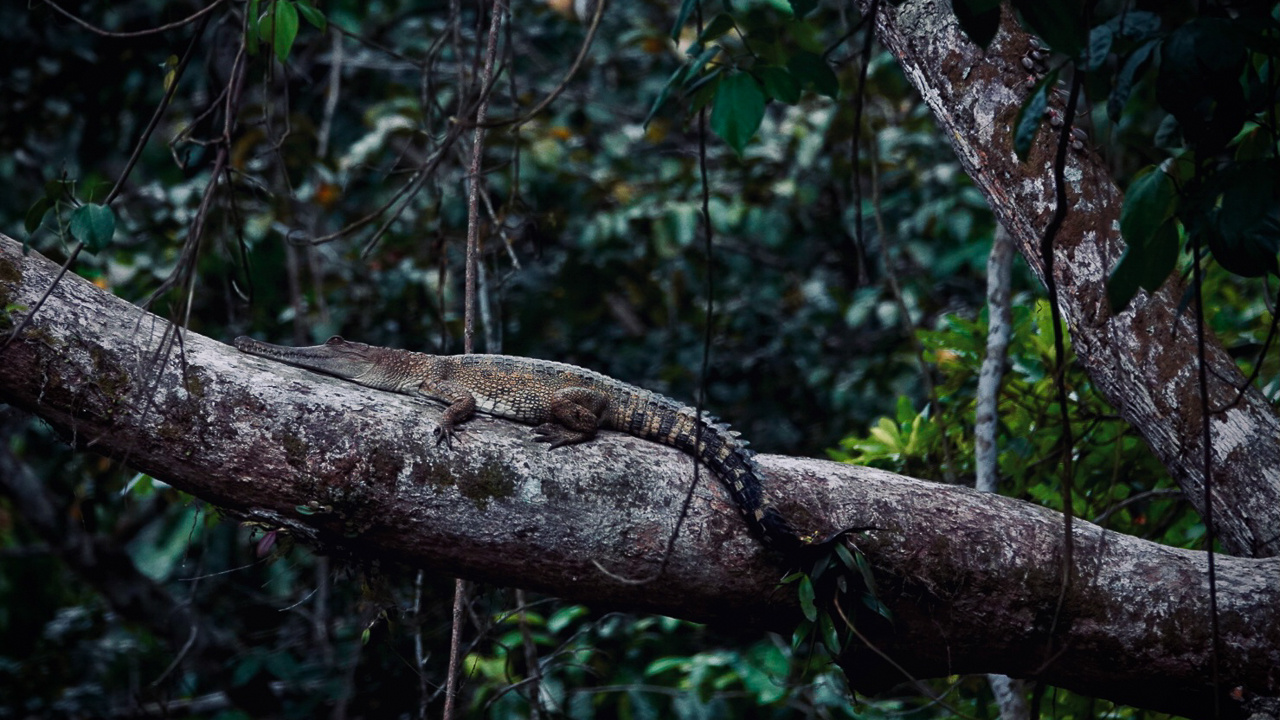
Wetlands
Explore Odzala-Kokoua National Park, where rivers and wetlands create a vibrant and dynamic ecosystem. This living network seamlessly blends diverse habitats and species, highlighting the natural harmony between water and land. Water, the essence of life, sustains the stunning beauty and rich biodiversity of the park's landscape.
Odzala-Kokoua's Lifelines
- The Odzala-Kokoua National Park is crisscrossed by a dense network of rivers, which form the lifeblood of the park's ecosystem, crucial for sustaining life and biodiversity.
- The Mambili River, the park’s main drainage river, eventually merges into the Congo River through the large inland delta of Sangha and Likouala-aux-Herbes. The Lékoli and Kokoua rivers are key tributaries.
- Seasonal fluctuations in water levels create a dynamic environment, with low levels in August and flooding from October to December and March to April. Water quality varies across the park, influenced by diverse soil compositions.
Wetlands Ecosystem
- Odzala-Kokoua’s wetlands are vital to its ecological health. These areas, primarily composed of forests, experience regular flooding, creating a rich interface between land and water. The forest canopy belongs to the terrestrial ecosystem, while the understory and floor are part of the aquatic-terrestrial interface.
- During major floods in November and April-May, the drainage system is submerged, making it ideal for canoe/kayak exploration. In the dry season, the exposed alluvial levees offer dry paths for exploration.
Riparian and Swamp Forests
a. Riparian Forests:
- These forests grow on the banks and alluvial levees of the Mambili and Lékoli rivers and are liable to be flooded. The trees growing along the river are in direct contact with waters heavily laden with alluvium.
- The Lékoli river has no major alluvial levees. Its riparian forests are therefore directly in contact with the river waters, primarily consisting of Uapaca heudelotii forests. This tree, known for its prominent stilt roots and spreading habit, is common throughout the Guineo-Congolian region.
- The Mambili river has more developed alluvial levees. Its riparian forests are composed of more varied species. Uapaca heudelotii is found on the banks close to the river. Higher parts of the levees are covered by a more complex forest, including the towering Azobé tree, which can reach 30-40m high and is recognizable by its bright red leaves appearing in November-December. Another prominent species is the large and massive Kapok tree.
- These seasonally flooded riparian forests along the Mambili and Lékoli rivers provide habitats for diverse species and are essential for biodiversity.
b. Swamp Forests:
- Swamp forests are constantly relatively waterlogged, with water levels just above or below the surface, varying significantly. These forests are generally more diverse than riparian forests.
- Mboko Lodge is situated along the banks of the Lékenié River, offering direct access to the Lékénié swamp forest. Visitors can explore this unique habitat via a wooden boardwalk that leads through the swamp forest into the savannah.
⇒ This location provides a good opportunity to spot birds that prefer this habitat, such as the Chocolate-backed Kingfisher, Narina Trogon, Emerald Cuckoo, and many other species. - Their canopy is not very high—the tallest trees hardly reach 20 or 25m, and they often have an open canopy. Their understory can be very dense.
- Depending on the dominant trees, different types can be distinguished. Raphia forests are quite common along the large rivers and low-lying areas behind the alluvial levees. This palm can be mixed with other species, but it sometimes appears in mono-dominant stands. These can be found in marshy pockets situated in the middle of savannahs as well as in forests bordering large rivers.
Bosquettes in the Wetlands and Beyond
- Bosquettes are small, densely wooded areas within the larger wetlands landscape. They play a crucial role in biodiversity by providing specialized habitats and acting as "stepping stones" for migrating animals.
- These forest patches create their own microclimate and protect the soil from erosion. Bosquettes are often rich in species diversity and contribute to the stability and ecological connectivity of the wetlands in Odzala-Kokoua National Park.
In addition to wetlands, bosquettes can also be found in other parts of the park, such as:
- Savannahs: Providing shade and habitat diversity within grassland areas.
- Forest edges: Acting as transitional zones between open land and dense forests.
- Floodplains: Offering refuge and resources during periods of flooding.
Ecological Significance and Conservation
These wetlands facilitate essential nutrient exchanges, making them vital for maintaining the park's biodiversity:
- Floodwaters deposit sediments in the understory.
- Retreating waters carry organic matter to the rivers, enriching the aquatic ecosystem.
However, freshwater habitats face significant threats, including droughts, drainage, pollution, and dam construction. Conservation efforts are critical to protect these ecosystems and preserve their biodiversity. In the Congo region, rivers serve as primary transportation and communication routes, essential for park rangers, visitors, scientists, and even poachers.

We love teaching you about the magic of Odzala-Kokoua National Park.
Sign up to learn more.
If you have any further questions, please visit our comprehensive FAQ section.
If you have any further questions, please visit our comprehensive FAQ section.